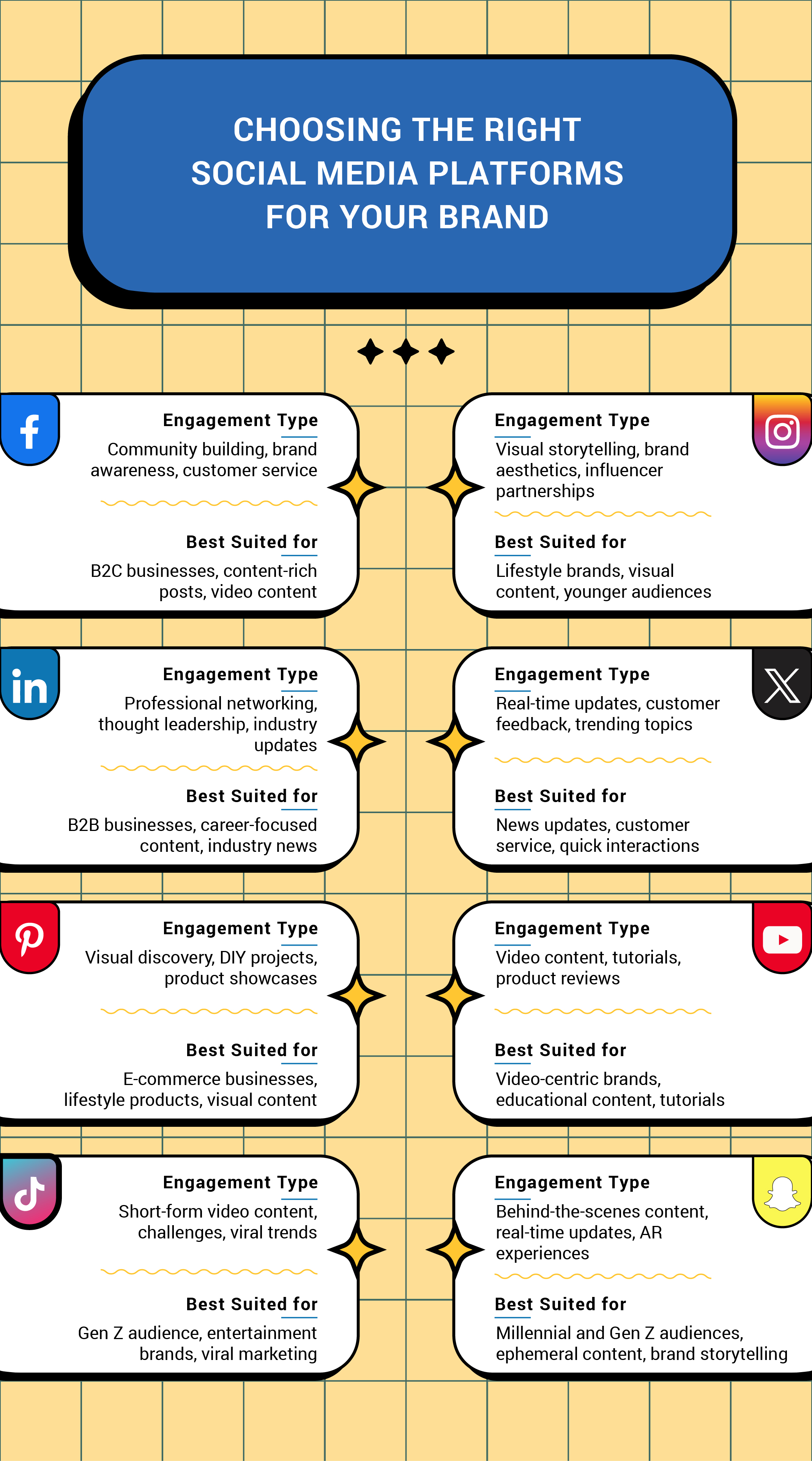Amidst the complex web of business and marketing, the platforms you choose to present your brand are like the canvases for an artist or the stages for a performer. Just as Van Gogh carefully selected his canvas and theatre directors meticulously pick their stages, your choice of platform can significantly impact the perception and success of your brand. How do you ensure your brand shines brightly on the right stage?
This philosophical exploration dives into the essence of choosing the right platforms, drawing on timeless theories and contemporary examples to help you navigate this crucial aspect of branding.
The Canvas of Brand Identity: McLuhan’s Medium is the Message
Marshall McLuhan, a pioneer in media theory, famously stated, “The medium is the message.” This means that the platform through which you communicate your brand is as important as the content itself. Think of the difference between a handwritten love letter and a text message. Both convey affection, but the medium drastically alters the emotional impact and perception.
In branding, choosing the right platform is akin to choosing the right canvas for a painting. A luxury brand like Rolex might lose its aura if promoted heavily on platforms associated with budget-conscious shopping. Instead, it finds a more fitting canvas on platforms like glossy magazines, high-end websites, and exclusive events. The platform here elevates the brand's message, enhancing its perceived value.
The Philosopher’s Stone: Aristotle’s Three Modes of Persuasion
Aristotle’s ethos, pathos, and logos offer timeless wisdom in understanding how to engage your audience. These modes of persuasion can guide your platform choice:
-
Ethos (Credibility): Platforms that enhance your brand’s credibility. For instance, LinkedIn is a powerful platform for B2B brands because it emphasizes professional credibility and industry expertise.
-
Pathos (Emotion): Platforms that evoke emotions. Instagram and Pinterest are visually driven and evoke strong emotional responses, making them ideal for lifestyle and fashion brands.
-
Logos (Logic): Platforms that appeal to logic and reason. For brands focused on detailed product specifications or educational content, platforms like YouTube (with its tutorial videos) or Medium (for in-depth articles) are perfect.
By aligning your brand’s ethos, pathos, and logos with the appropriate platform, you ensure that your message resonates deeply with your audience.

The Stage of Engagement: Erving Goffman’s Dramaturgical Analysis
Sociologist Erving Goffman likened social interaction to a theatrical performance. In his dramaturgical analysis, every interaction is a performance, with front stages where we present ourselves to the world and back stages where we prepare.
For your brand, different platforms represent different stages:
-
Front Stage: Public-facing platforms where your brand performs. These include social media, your website, and public relations outlets. Here, your brand’s persona must be carefully crafted to meet audience expectations.
-
Back Stage: Platforms for internal communication and strategy. Tools like Slack, Trello, and internal webinars are where your brand prepares and strategizes away from the public eye.
Balancing these stages ensures a coherent performance, where the behind-the-scenes preparation enhances the front-stage presentation, leading to a more authentic and engaging brand experience.
The Tao of Timing: Kairos and the Moment of Opportunity
In rhetoric, kairos refers to the opportune moment to deliver a message. Choosing the right platform is not just about where but also when. For example, Twitter thrives on immediacy and real-time engagement. It’s the platform of choice for breaking news, trending topics, and timely interactions.
Understanding kairos helps you align your brand’s presence with the most impactful moments. A tech startup launching a new product might choose to debut it on platforms frequented by early adopters and tech enthusiasts, like Reddit’s r/technology or Product Hunt, seizing the moment when the audience is most receptive.
The Harmony of Integration: Yin and Yang of Cross-Platform Synergy
In Chinese philosophy, yin and yang represent balance and harmony. Similarly, your brand’s platform strategy should achieve a harmonious balance. Cross-platform synergy ensures that your message is consistent yet adapted to the strengths of each platform.
Consider Coca-Cola’s “Share a Coke” campaign. It seamlessly integrated physical products (coke bottles with names) with social media engagement (encouraging users to share photos). This harmonious approach created a powerful, unified brand experience across multiple touchpoints.
Conclusion: The Alchemy of Platform Selection
Selecting the perfect platforms to plate your brand is an art and science, a philosophical journey that requires understanding the nature of each platform, aligning with timeless principles of persuasion, performance, timing, and harmony. By treating platform selection as a strategic and philosophical endeavor, you elevate your brand’s narrative. This further ensures that every brushstroke and performance resonates with your audience, creating a masterpiece in the vast gallery of the marketplace.
Remember that the platforms are not just venues but partners in storytelling. Choose them wisely, and they will transform your brand into a timeless narrative, captivating and enduring in the hearts and minds of your audience.










